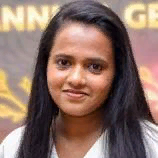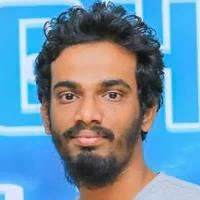International Journal of Image, Graphics and Signal Processing (IJIGSP)
IJIGSP Vol. 14, No. 6, 8 Dec. 2022
Cover page and Table of Contents: PDF (size: 1023KB)
Deep Learning Based Autonomous Real-Time Traffic Sign Recognition System for Advanced Driver Assistance
Full Text (PDF, 1023KB), PP.70-83
Views: 0 Downloads: 0
Author(s)
Index Terms
YOLO, Xception, preprocessing, data augmentation, template matching.
Abstract
Deep learning (DL) architectures are becoming increasingly popular in modern traffic systems and self-driven vehicles owing to their high efficiency and accuracy. Emerging technological advancements and the availability of large databases have made a favorable impact on such improvements. In this study, we present a traffic sign recognition system based on novel DL architectures, trained and tested on a locally collected traffic sign database. Our approach includes two stages; traffic sign identification from live video feed, and classification of each sign. The sign identification model was implemented with YOLO architecture and the classification model was implemented with Xception architecture. The input video feed for these models were collected using dashboard camera recordings. The classification model has been trained with the German Traffic Sign Recognition Benchmark dataset as well for comparison. Final accuracy of classification for the local dataset was 96.05% while the standard dataset has given an accuracy of 92.11%. The final model is a combination of the detection and classification algorithms and it is able to successfully detect and classify traffic signs from an input video feed within an average detection time of 4.5fps
Cite This Paper
Sithmini Gunasekara, Dilshan Gunarathna, Maheshi B. Dissanayake, Supavadee Aramith, Wazir Muhammad, "Deep Learning Based Autonomous Real-Time Traffic Sign Recognition System for Advanced Driver Assistance", International Journal of Image, Graphics and Signal Processing(IJIGSP), Vol.14, No.6, pp. 70-83, 2022. DOI:10.5815/ijigsp.2022.06.06
Reference
[1]J. Redmon and A. Farhadi, “YOLOv3: An incremental improvement,” arXiv, 2018.
[2]F. Chollet, “Xception: Deep learning with depthwise separable convolutions,” Proc. - 30th IEEE Conf. Comput. Vis. Pattern Recognition, CVPR 2017, vol. 2017-Janua, pp. 1800–1807, 2017, doi: 10.1109/CVPR.2017.195.
[3]C. Dong, C. C. Loy, K. He, and X. Tang, “Image Super-Resolution Using Deep Convolutional Networks,” IEEE Trans. Pattern Anal. Mach. Intell., vol. 38, no. 2, pp. 295–307, 2016, doi: 10.1109/TPAMI.2015.2439281.
[4]J. Stallkamp, M. Schlipsing, J. Salmen, and C. Igel, “The German Traffic Sign Recognition Benchmark: A multi-class classification competition,” in Proceedings of the IEEE International Joint Conference on Neural Networks, 2011, pp. 1453–1460.
[5]Y. Lecun, L. Bottou, Y. Bengio, and P. Ha, “LeNet,” Proc. IEEE, no. November, pp. 1–46, 1998.
[6]M. D. Zeiler and R. Fergus, “Visualizing and understanding convolutional networks,” Lect. Notes Comput. Sci. (including Subser. Lect. Notes Artif. Intell. Lect. Notes Bioinformatics), vol. 8689 LNCS, no. PART 1, pp. 818–833, 2014, doi: 10.1007/978-3-319-10590-1_53.
[7]K. Simonyan and A. Zisserman, “Very deep convolutional networks for large-scale image recognition,” 3rd Int. Conf. Learn. Represent. ICLR 2015 - Conf. Track Proc., pp. 1–14, 2015.
[8]G. E. Hinton, N. Srivastava, A. Krizhevsky, I. Sutskever, and R. R. Salakhutdinov, “Improving neural networks by preventing co-adaptation of feature detectors,” pp. 1–18, 2012, [Online]. Available: http://arxiv.org/abs/1207.0580.
[9]M. Lin, Q. Chen, and S. Yan, “Network in network,” 2nd Int. Conf. Learn. Represent. ICLR 2014 - Conf. Track Proc., pp. 1–10, 2014.
[10]C. Szegedy et al., “Going deeper with convolutions,” Proc. IEEE Comput. Soc. Conf. Comput. Vis. Pattern Recognit., vol. 07-12-June, pp. 1–9, 2015, doi: 10.1109/CVPR.2015.7298594.
[11]S. Ioffe and C. Szegedy, “Batch normalization: Accelerating deep network training by reducing internal covariate shift,” 32nd Int. Conf. Mach. Learn. ICML 2015, vol. 1, pp. 448–456, 2015.
[12]C. Szegedy, V. Vanhoucke, S. Ioffe, J. Shlens, and Z. Wojna, “Rethinking the Inception Architecture for Computer Vision,” Proc. IEEE Comput. Soc. Conf. Comput. Vis. Pattern Recognit., vol. 2016-Decem, pp. 2818–2826, 2016, doi: 10.1109/CVPR.2016.308.
[13]C. Szegedy, S. Ioffe, V. Vanhoucke, and A. A. Alemi, “Inception-v4, inception-ResNet and the impact of residual connections on learning,” 31st AAAI Conf. Artif. Intell. AAAI 2017, pp. 4278–4284, 2017.
[14]C. Garcia, “Simplifying ConvNets for Fast Learning Simplifying ConvNets for Fast Learning,” no. January, pp. 1–8, 2015.
[15]N. Yao et al., “L2MXception: an improved Xception network for classification of peach diseases,” Plant Methods, vol. 17, no. 1, pp. 1–14, 2021, doi: 10.1186/s13007-021-00736-3.
[16]S. J. Pan and Q. Yang, “A survey on transfer learning,” IEEE Trans. Knowl. Data Eng., vol. 22, no. 10, pp. 1345–1359, 2010, doi: 10.1109/TKDE.2009.191.
[17]K. Wang, X. Gao, Y. Zhao, X. Li, D. Dou, and C.-Z. Xu, “Pay Attention to Features, Transfer Learn Faster CNNs,” Iclr, pp. 1–14, 2019.
[18]K. He, X. Zhang, S. Ren, and J. Sun, “Deep residual learning for image recognition,” Proc. IEEE Comput. Soc. Conf. Comput. Vis. Pattern Recognit., vol. 2016-Decem, pp. 770–778, 2016, doi: 10.1109/CVPR.2016.90.
[19]M. Hussain, J. J. Bird, and D. R. Faria, “A study on CNN transfer learning for image classification,” Adv. Intell. Syst. Comput., vol. 840, no. June, pp. 191–202, 2019, doi: 10.1007/978-3-319-97982-3_16.
[20]L. Yang and A. Shami, “On hyperparameter optimization of machine learning algorithms: Theory and practice,” Neurocomputing, vol. 415, pp. 295–316, 2020, doi: 10.1016/j.neucom.2020.07.061.
[21]T. Yu and H. Zhu, “Hyper-parameter optimization: A review of algorithms and applications,” arXiv, pp. 1–56, 2020.
[22]J. Coady, A. O’Riordan, G. Dooly, T. Newe, and D. Toal, “An overview of popular digital image processing filtering operations,” in Proceedings of the International Conference on Sensing Technology, ICST, 2019, vol. 2019-Decem, no. December, doi: 10.1109/ICST46873.2019.9047683.
[23]B. Desai, U. Kushwaha, and S. Jha, “Image Filtering -Techniques , Algorithm and Applications ISSN NO : 1869-9391 Image Filtering - Techniques , Algorithm and Applications,” no. December, 2020.
[24]K. Yamashita and K. Markov, Medical image enhancement using super resolution methods, vol. 12141 LNCS. Springer International Publishing, 2020.
[25]A. Mikołajczyk and M. Grochowski, “Data augmentation for improving deep learning in image classification problem,” in 2018 International Interdisciplinary PhD Workshop, IIPhDW 2018, 2018, no. August 2019, pp. 117–122, doi: 10.1109/IIPHDW.2018.8388338.
[26]C. Shorten and T. M. Khoshgoftaar, “A survey on Image Data Augmentation for Deep Learning,” J. Big Data, vol. 6, no. 1, 2019, doi: 10.1186/s40537-019-0197-0.
[27]J. Redmon, S. Divvala, R. Girshick, and A. Farhadi, “You only look once: Unified, real-time object detection,” Proc. IEEE Comput. Soc. Conf. Comput. Vis. Pattern Recognit., vol. 2016-Decem, pp. 779–788, 2016, doi: 10.1109/CVPR.2016.91.
[28]J. Redmon and A. Farhadi, “YOLO9000: Better, faster, stronger,” Proc. - 30th IEEE Conf. Comput. Vis. Pattern Recognition, CVPR 2017, vol. 2017-Janua, pp. 6517–6525, 2017, doi: 10.1109/CVPR.2017.690.
[29]N. S. Hashemi, R. B. Aghdam, A. S. B. Ghiasi, and P. Fatemi, “Template Matching Advances and Applications in Image Analysis,” 2016, [Online]. Available: http://arxiv.org/abs/1610.07231.
[30]R. Girshick, J. Donahue, T. Darrell, and J. Malik, “Rich feature hierarchies for accurate object detection and semantic segmentation,” Proc. IEEE Comput. Soc. Conf. Comput. Vis. Pattern Recognit., pp. 580–587, 2014, doi: 10.1109/CVPR.2014.81.
[31]M. A. Wani, F. A. Bhat, S. Afzal, and A. I. Khan, “Advances in Deep Learning,” vol. 57, pp. 13–29, 2019, doi: 10.1007/978-981-13-6794-6.
[32]T. Y. Lin et al., “Microsoft COCO: Common objects in context,” Lect. Notes Comput. Sci. (including Subser. Lect. Notes Artif. Intell. Lect. Notes Bioinformatics), vol. 8693 LNCS, no. PART 5, pp. 740–755, 2014, doi: 10.1007/978-3-319-10602-1_48.
[33]Muhammad, Wazir, Supavadee Aramvith, and Takao Onoye. "Multi-scale Xception based depthwise separable convolution for single image super-resolution." Plos one 16, no. 8 (2021): e0249278.
[34]F. Cardinale and D. Tran, “ISR,” 2018. https://github.com/idealo/image-super-resolution.
[35]S. Gunasekara, D. Gunarathna, and M. Dissanayake. “Advanced Driver-Assistance System with Traffic Sign Recognition for Safe and Efficient Driving”. International Journal on Recent and Innovation Trends in Computing and Communication, vol. 9, no. 9, Sept. 2021, pp. 11-15.




